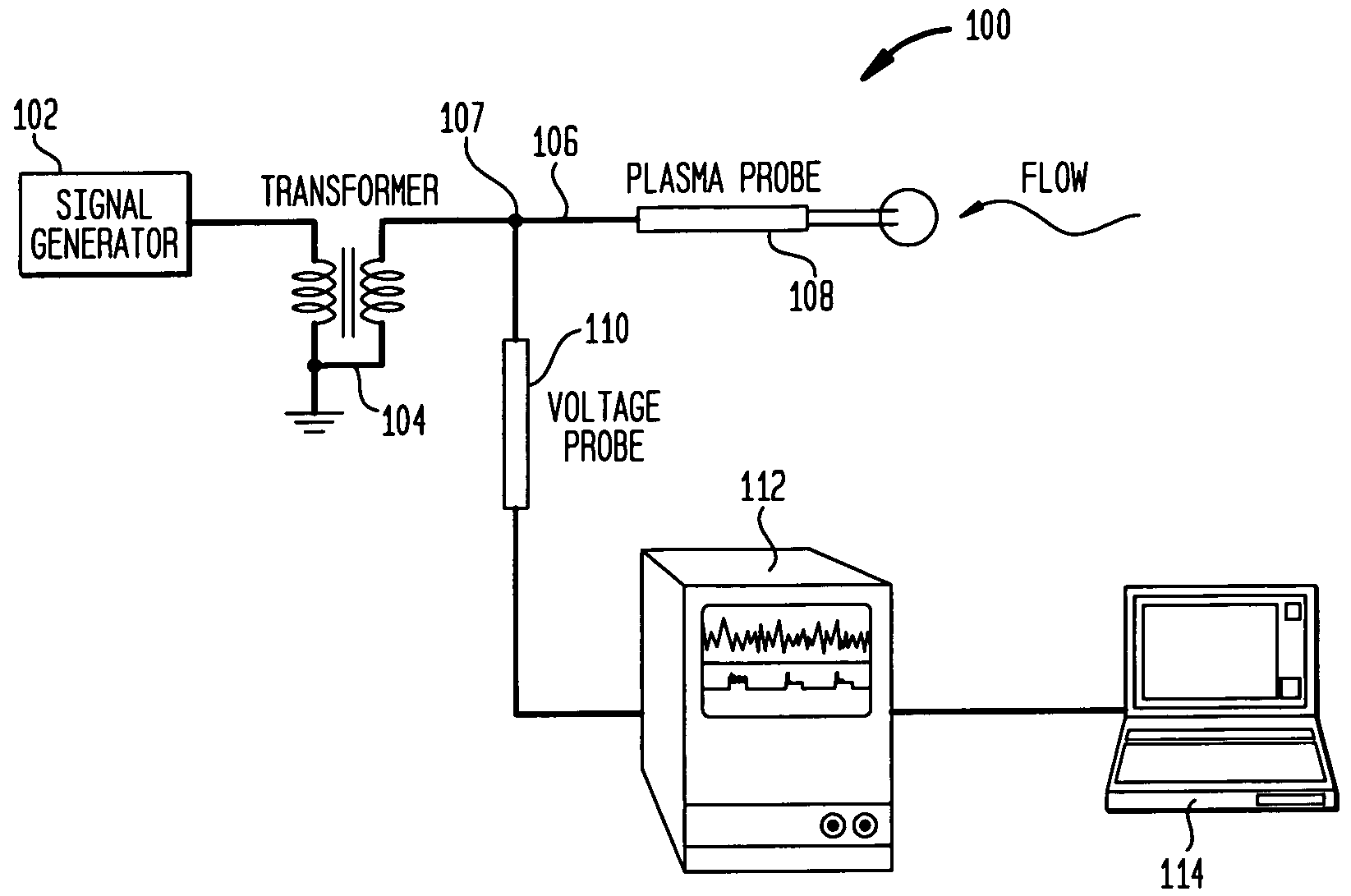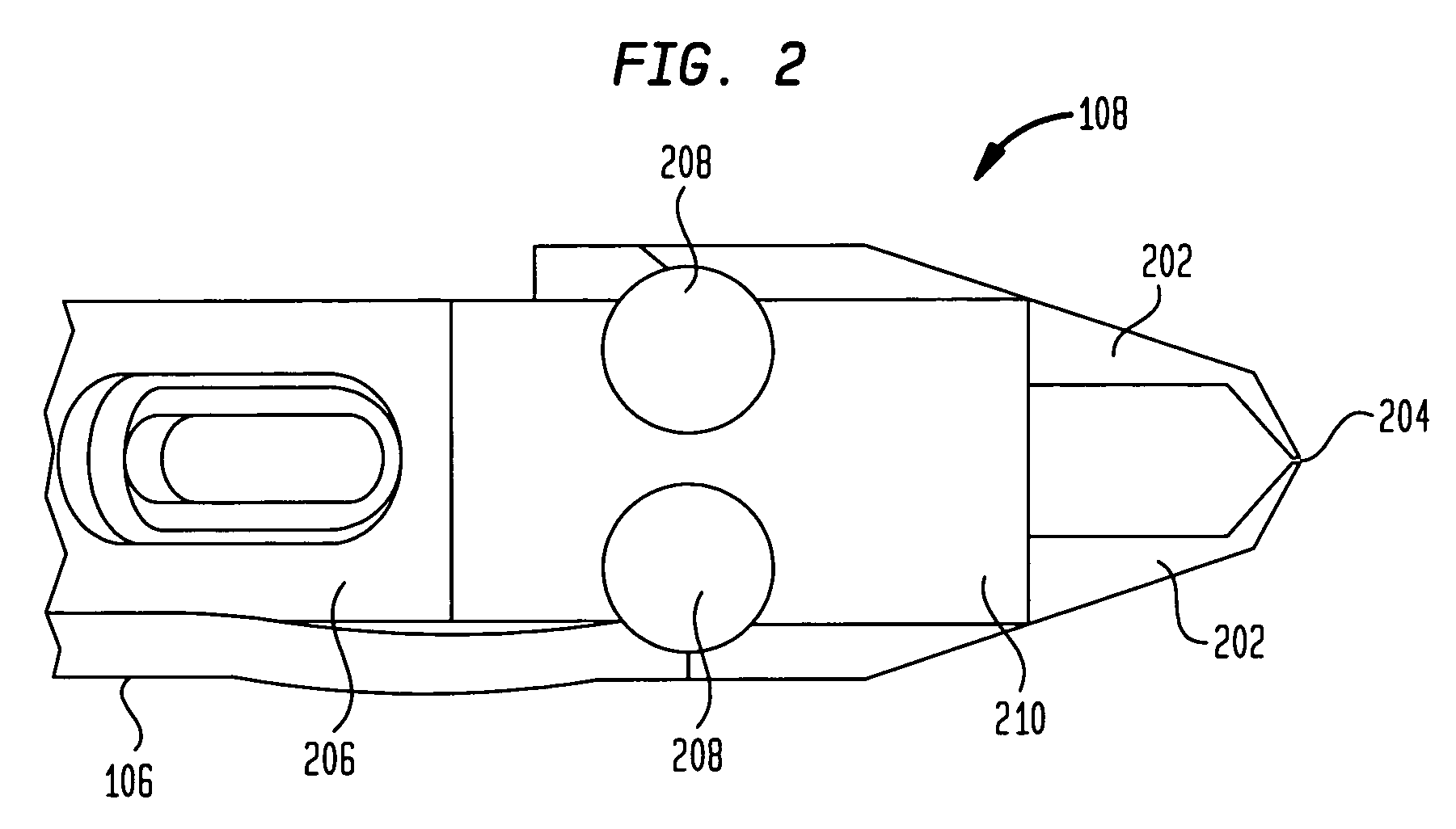Plasma anemometer and method for using same
a plasma anemometer and plasma technology, applied in the field of measurement systems, can solve the problems of inability to accurately simulate numerical simulations, inability to develop empirical criteria or validate numerical simulations, and inability to accurately simulate,
- Summary
- Abstract
- Description
- Claims
- Application Information
AI Technical Summary
Problems solved by technology
Method used
Image
Examples
Embodiment Construction
[0025]Embodiments of the present invention are generally directed to an AC driven, plasma anemometer for measuring flows at hypersonic Mach numbers. Such an anemometer uses a plasma discharge formed between two encapsulated electrodes as the primary sensing element. The plasma discharge is preferably driven by an Alternating Current (AC) power source, such as a low power (e.g., less than 5 Watt) AC source. Certain embodiments of the plasma anemometer include one or more of the following advantages: it requires no frequency compensation up to its AC carrier frequency, has an amplitude-modulated output that has excellent common-mode rejection with a signal-to-noise ratio that is improved over the output generated by hot-wire devices, does not include a sensor element that could easily break, it may have a small spatial volume, and is insensitive to temperature variations making it easier to calibrate than thermal-based sensors, and it may be operated across a myriad of different press...
PUM
 Login to View More
Login to View More Abstract
Description
Claims
Application Information
 Login to View More
Login to View More - R&D
- Intellectual Property
- Life Sciences
- Materials
- Tech Scout
- Unparalleled Data Quality
- Higher Quality Content
- 60% Fewer Hallucinations
Browse by: Latest US Patents, China's latest patents, Technical Efficacy Thesaurus, Application Domain, Technology Topic, Popular Technical Reports.
© 2025 PatSnap. All rights reserved.Legal|Privacy policy|Modern Slavery Act Transparency Statement|Sitemap|About US| Contact US: help@patsnap.com



